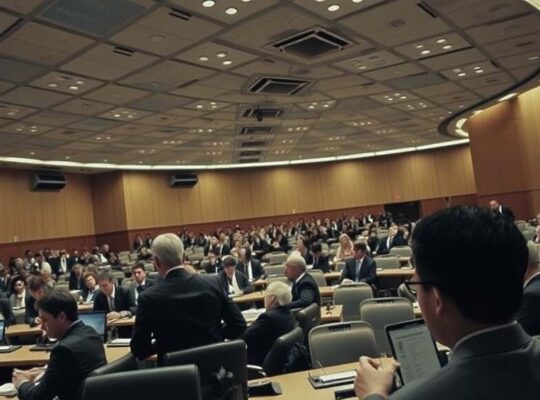Concerning Trend Emerges in German Labor Market
Preliminary data released by Destatis, the German Federal Statistical Office, reveals a concerning slowdown in the nation’s labor market, sparking questions about the efficacy of current economic policies and potential headwinds for the ruling coalition. While seasonally adjusted employment dipped slightly in September 2025, marking the fifth consecutive monthly decrease of approximately 21,000 individuals, the broader picture highlights a more substantial decline.
The customary autumnal uptick in employment, typically observed between August and September, proved significantly weaker than the average recorded between 2022 and 2024. The actual increase of 150,000 individuals, representing only a 0.3 percent rise, points to a diminished vitality within key sectors. This subdued rebound fuels anxieties among economists and policymakers, particularly given the ongoing debate surrounding Germany’s industrial competitiveness.
Year-on-year, the number of employed individuals has contracted by 46,000, or 0.1 percent, continuing a downward trend visible since May 2025. This prolonged vulnerability calls into question predictions of a robust post-pandemic recovery and intensifies scrutiny on government initiatives aimed at fostering long-term growth.
The labor market’s weakness is compounded by a stark increase in unemployment figures. September 2025 registered 1.84 million unemployed individuals, a dramatic 425,000 more than the same period last year, translating to an unemployment rate of 4.1 percent – a substantial 0.9 percentage point increase. This surge is triggering renewed calls for a revised approach to workforce training and unemployment support programs.
Even accounting for seasonal and irregular factors, unemployment numbers remain stubbornly high, rising by 15,000 compared to August 2025, with a corresponding increase in the adjusted unemployment rate to 3.9 percent.
The persistent negative trends in employment and unemployment are likely to further exacerbate existing political tensions within the governing coalition. The Social Democratic Party (SPD), often championing worker protections, faces pressure to demonstrate tangible improvements, while the Free Democratic Party (FDP), advocating for deregulation, is likely to leverage the data to push for policy changes targeting labor market flexibility. The data demands a thorough reassessment of government strategy to address the underlying causes of the labor market’s sluggish performance, from skills mismatches and demographic shifts to the broader challenges facing German industry in a rapidly changing global economy.












